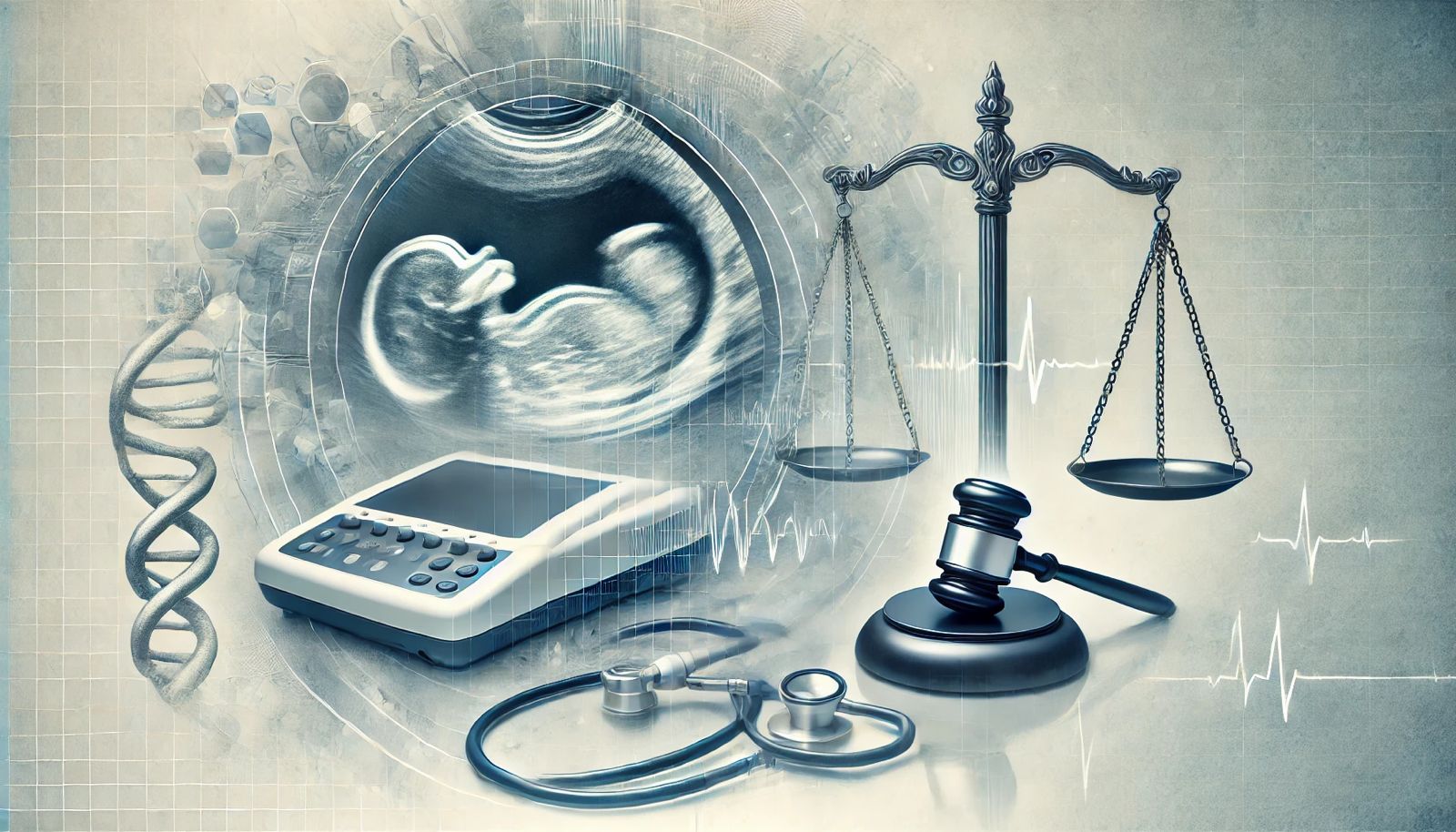The recent National Consumer Disputes Redressal Commission’s judgment on fetal sonography is a blatant example of judicial activism and retributive justice.
The case: On 07.10.2006, Mrs. Anita Shrouti, during her second pregnancy, consulted Dr. Sarita Bhonsule, Gynecologist and Obstetrician and remained under her follow-up for Ante Natal Care (ANC) till delivery. On 08.11.2006 Dr. Sarita Bhonsule referred the patient to M/s. Imaging Point the scanning centre. The USG was performed by the Radiologist Dr. Dilip Ghike, and reported it as normal. Thereafter, subsequently performed 2nd USG on 08.01.2007 (17th to 18th week of pregnancy), 3rd USG on 12.03.2007 and 4th USG on 12.05.2007. It was alleged that all the USG were reported as "no obvious congenital anomalies in the fetal head abdomen and spine". After delivery the mother and the attendants were shocked to see the grossly malformed male newborn. The newborn had agenesis of fingers, right leg below knee and left foot below ankle joint. The Complainants alleged that it was due to the Opposite Party No. 2 who negligently performed the USG and issued wrong reports. It was further alleged that it was possible to detect the anomaly between 12 to 14 weeks of pregnancy, but the Opposite Party No. 2 failed to detect anomalies during 2nd, 3rd and 4th USG, most importantly at 17 to 18 weeks.
Level 1 ultrasonography for fetal-well-being: To perform level 1 sonography examination of embryo and fetus for fetal well being and gross developmental defects is a norm of antenatal check up. Being harmless and non-invasive it is routinely done in all pregnancies. In early stage of pregnancy it is to assess the viability of the embryo. In later months it is to assess the growth rate of the fetus. Also for detection of life threatening defects of skull, brain, spinal cord, heart and intra-abdominal organs. It is adequately proved that it was competently and expertly done in the case to the satisfaction of treating obstetrician. Since the child was born with multiple limb defects, in retrospect, it is now disputed that the sonologist should have performed Level 2 targeted sonography for limb defects instead of Level 1 sonography in 17 – 21 week sonography.
Level 2 sonography and other invasive tests for chromosomal and gene based defects. These test are done when there is indication for it in form of high risk of congenital malformation – family history of congenital malformation, abnormal obstetric history, old age pregnancy, patient on teratogenic medicines etc. The obstetrician prescribes a Triple Marker Test to assess the high risk of malformations. This test was duly conducted in the case and was negative. Thus there was no basis for the obstetrician or the sonologist to suspect other malformations. The Level 1 ultrasound examination, performed sequentially four times, had ruled out gross congenital anomalies. There was no other abnormality, in the conseptus, to suggest possibility of other malformations. The Level 2 ultrasound to detect limb defects, and other aggressive tests to detect serious congenital anomalies were not performed. The Level 2 ultrasound being non-invasive may be routinely performed in some elite centers to rule out limb defects, it was not a mandatory in our country in 2006, 15 years before the judgment. The Medical Council, the ICMR or Obstetric Associations should seriously consider it to make it mandatory throughout the country.
The Deficiency and the Damage: The National Commission considered it obligatory and mandatory for the sonologist to have done a Level 2 sonography, to detect limb defects, in all pregnancies, irrespective of high risk, or negative Triple Marker Test. The Commission considered it a lapse and deficiency on part of the sonologist not to have done it. For this deficiency to amount to negligence, it must be direct cause of the alleged damage, the limb defects. The limb defects in the fetus were certainly not caused by this omission. The direct damage, as stated by the Commission, was the woman’s right to kill the child in the womb by medical termination of pregnancy. Since she could not exercise this right the child was born live with limb defects. To hold the sonologist responsible for the limb defects, as if his negligence caused them, and make him pay for child’s life long upkeep, is a tortuous judicial logic. The balance between accountability and fairness is completely lost. It is perverse retributive (in)justice.
Right of mother v/s right of the child in the womb. While a pregnant mother has a right not to continue the pregnancy and terminate it, under the right to life, the child too has a right to life. The fetal wellbeing studies are done for the life of the child. Does a child with some limb defects loose his right to be born alive? What level of limb defects would extinguish the right of the child to be born alive? There are large number of people with limb defects, or total absence of limbs, leading a life of their own. The right of a woman to terminate her pregnancy is not an absolute right and is contingent on the condition of the fetus. The conflicting rights of the mother and her child have to be balanced and reconciled by the judiciary. No ethical doctor is obliged to, or agree to, destroy a live child in the womb, except when the continuation of pregnancy becomes, medically, a threat to the life of the mother, who is his patient.
The cause of limb defects: It is well established that limb defects – Amelia, Meromelia and Phocomelia (there is wide variety of limb defects) – is not always caused by chromosomal of gene defects. It is, particularly phocomelia, caused by some teratogenic drug or substance that the mother was consuming in early initial stage of her conception. Teratogenic substances cause, by deranging angiogensis i.e. blood vessel formation for blood circulation, defects during the development of limbs. Every case of phocomelia should be primarily investigated for it. Thalidomide catastrophe (1957-1961) by the drug introduced for pregnancy vomiting, must be recalled in this regard. The culprit who caused the limb defects should be punished if identified. In thalidomide disaster it was the pharmaceutical company who had introduced the drug.
The accuracy of the Level 2 ultrasound examination to detect limb defects: The inherent limitations of the Level 2 sonography to detect limb defects have to be considered before making it a mandatory test and saddling the sinologist with negligence if he fails to detect it. It must be remembered that the length of the fetal limbs at about 20 weeks of gestation is just 2.5 to 3 inches that is half the size of your little finger. The foot and the palm is less than half an inch. The sonologist examines these tiny parts by obtaining their cross section by 2D sonography and not by 3D imaging. There is 30% possibility of missing a defect. The medical fraternity should think thrice before accepting the Mandate of the Commission and risk being prosecuted.
In fairness and justice the National Commission should review their decision.
Dr. Shri Gopal Kabra
MBBS, LLB, MSc, MS(Anatomy), MS(Surgery)
15, Vijay Nagar, D-block, Malviya Nagar, Jaipur-302017
Mobile: 8003516198
Balancing Rights: The Complex Case of Fetal Sonography and Judicial Overreach

Udayan and ors. v/s M/S Imaging Point and ors.
25 May 2022 , National Consumer Disputes Redressal Commission
Dr. Shri Gopal Kabra
..










Recent comments
Latest Comments section by users